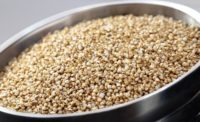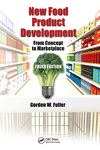Culinary perspectives on clean label

“You say you want a revolution? Well you know, we all want to change the world…”
While John Lennon’s words were certainly not directed to the food industry, a revolution is underway, and it’s happening one clean label at a time.
Chefs and food scientists alike are still focusing on developing the next new groundbreaking snack, but now with a back-to-basics approach focusing on whole and natural food ingredients to meet consumer demands.
Many referred to 2017 as “the year of the clean label.” Though far from ubiquity, it’s clear that it is quickly moving from a trend to the norm in product development today.
While there is no governed definition of clean label, the elimination of all artificial ingredients is the essential first step. Many of us in R&D were first exposed to this movement with the Whole Foods list of unacceptable ingredients. Others have followed suit, including Trader Joe’s, as well as Supervalu with a “free from” ingredient list requirement for its Wild Harvest private brand.
The revolution presents some interesting challenges. Industry leaders, such as Seattle-based CuliNex (www.culinex.biz), are helping better define what clean-label product development is, while helping blaze the trail for others. Emily Munday, director of operations, weighed in on some of the challenges product developers face as demand increases and the number of acceptable ingredients decreases.
Michael Holleman: How do you and your team at CuliNex define clean label?
Emily Munday: It means different things to different people. We of course adhere to our various customer definitions, but it starts with a Culinology philosophy of using real food when we develop. We use culinary principles to develop flavor, rather than relying on highly processed ingredients, and use as many whole-food ingredients as possible. We use cooking techniques where they make sense and really just stay true to the food.
MH: What do you see as the biggest challenges in meeting the demand for clean label?
EM: Matching ingredient functionality with clean alternatives can be a challenge, certainly with shelf-life extenders in baked goods, but there are options out there. We try to rely on formulation, developing formulas that work, rather than relying on ingredients as a crutch, which means getting the water activity low enough first and exploring all the ways to get the product to meet our expectations before we go to using ingredients. The issue can be the cost and sourcing of clean-label alternatives. You may find an alternative that works, but it is oftentimes more expensive, or you have to use more of it, which increases cost.
MH: How much of your new product development falls in the snack category?
EM: Whether it is meat snacks, crackers, crisps, cookies or energy bars, we are seeing a lot in this category. We do a lot of baked goods, sweets and snacks, and the biggest ask we see from our clients beyond clean label is low sugar and high protein. Vegetable sources of proteins come with their own flavor challenges. My philosophy is to bump the protein by looking at all the ingredients in the system and sweetness and flavor, not just going right for high-intensity sweeteners or processed protein crisps. Certain projects require that, but first we see if there is a way to meet label claims by using a combination of nut butters and different whole grains and seeds before relying on overly processed ingredients.
MH: Are there any standout ingredients you are seeing trending in the snack category?
EM: Definitely some of the sweeteners like stevia and monk fruit. I think in the future the conversation will be about the acceptability of ingredients like brown-rice syrup and tapioca syrup and some of these things that are being used as corn-syrup replacers. We need that functionality, but consumers don’t really understand what some of those things are yet. I think it’s only a matter of time before the toolbox continues to get smaller for sugar acceptability.
MH: What do you see as the next evolution of clean-label development?
EM: Simple labels that limit the number of ingredients, which is really hard to formulate around. We’re going to have to go to keep ingredient lists short and recognizable to consumers.
Looking for a reprint of this article?
From high-res PDFs to custom plaques, order your copy today!








